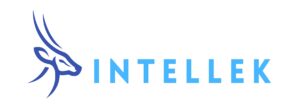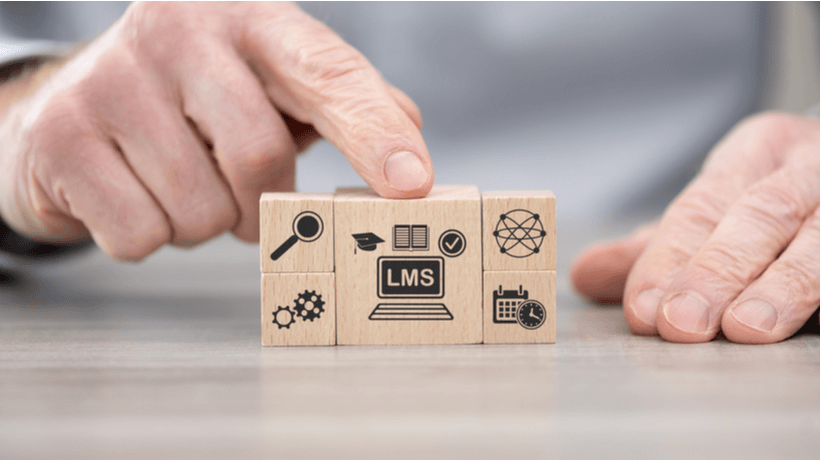LMS Selection Simplified: Choosing The Right LMS
The role of Learning Management Systems (LMSs) has become more pivotal than ever. Whether you're a training manager, an HR professional, an educator, or a small business owner, choosing the right LMS for your organization is critical. This guide is designed to assist you in navigating the process of choosing the perfect LMS for your needs. We understand that this decision is not one-size-fits-all; it requires a thoughtful and strategic approach. With the right LMS, you can enhance learning experiences, boost engagement, streamline administration, and achieve your training objectives more effectively.
Assessing Your Organization's LMS Needs
Selecting the ideal Learning Management System for your organization begins with thoroughly assessing your needs and objectives. This foundational step lays the groundwork for a successful LMS implementation.
The Importance Of Needs Assessment
It's crucial to understand precisely what your organization requires from a Learning Management System. Here's why a needs assessment is essential:
- Alignment with goals
A well-planned needs assessment ensures that your LMS choice aligns with your organization's training goals, whether it's improving employee skills, complying with regulations, or enhancing learning experiences [1]. - Resource optimization
It helps you avoid investing in features or capabilities that your organization doesn't need, while ensuring that you don't overlook critical functionalities. - Stakeholder involvement
Involving key stakeholders, such as department heads, trainers, and end users, in the needs assessment process ensures that the selected LMS caters to the requirements of all involved.
Conducting A Needs Assessment
Here's a step-by-step guide on how to conduct a comprehensive needs assessment:
- Step 1: Define objectives
Clearly state your organization's learning and training objectives. What skills or knowledge do you aim to impart? What are the desired outcomes? - Step 2: Identify your target audience
Determine who will be using the LMS. Are you training employees, customers, or both? Consider their demographics, technical proficiency, and learning preferences. - Step 3: Content analysis
Take stock of existing training materials. What can be reused, and what needs to be updated? - Step 4: Budget analysis
Establish a budget for your LMS project. Consider both initial costs and ongoing expenses, including maintenance and support. - Step 5: Technology infrastructure
Evaluate your current IT infrastructure. Does it support the LMS requirements, including hardware, software, and connectivity? - Step 6: Compliance requirements
Determine if your organization must adhere to specific industry regulations or certifications. Compliance needs can impact your LMS choice. - Step 7: Growth and scalability
Consider your organization's future growth. Will the LMS accommodate an expanding user base and training needs?
LMS Budget Considerations
Choosing the right LMS involves more than just selecting the platform with the most features. It also requires careful budget planning to ensure that your investment aligns with your organization's financial capabilities and long-term goals.
Budget Planning Tips
To effectively budget for your LMS, follow these tips:
- Define a realistic budget
Start by establishing a budget that takes into account all potential costs, both up-front and ongoing. Be realistic about what your organization can afford. - Consider total cost of ownership
Look beyond the initial price tag. Evaluate the total cost of ownership over several years, factoring in licensing, maintenance, and content expenses. - Prioritize features
Not all LMS features are equally essential. Prioritize the features that align with your organization's core objectives. - Explore pricing models
Investigate different pricing models offered by LMS providers. Some may offer flexible options that suit your budget better. - Negotiate with vendors
Don't hesitate to negotiate pricing and terms with LMS vendors. They may be willing to offer discounts or tailor packages. - Budget for scalability
Consider how your budget will accommodate future growth and the potential need to scale up your LMS. - Cost-benefit analysis
Lastly, conduct a cost-benefit analysis to determine the ROI of your chosen LMS. Evaluate how the system's features will impact your organization's goals and objectives. A well-chosen LMS should not only fit within your budget but also provide significant value and contribute to your training objectives.
Key LMS Features And Functionality
Here we guide you through the critical process of evaluating key features and functionality when choosing an LMS, providing a checklist to aid in the decision-making process.
Essential LMS Features
An effective LMS should possess the following essential features:
- Content management
The ability to upload, organize, and manage various types of content, including courses, documents, microlearning, videos, and quizzes. - User management
Robust user management tools, allowing you to add, remove, and categorize users, assign roles and permissions, and monitor user progress. - Reporting and analytics
Comprehensive reporting capabilities that provide insights into learner performance, course completion rates, and overall training effectiveness. - Scalability
The LMS should scale easily to accommodate your organization's growing user base and evolving training needs. - Mobile compatibility
Support for mobile learning, ensuring that users can access training materials on smartphones and tablets. - Customization options
The ability to tailor the LMS interface to match your organization's branding and create a seamless User Experience. - Assessment and quizzing
Tools for creating quizzes and assessments to evaluate learner comprehension and progress.
Aligning Features With Organizational Needs
Consider how each feature aligns with your organization's goals and objectives:
- Industry-specific features
Depending on your industry, you may require specialized features and compliance support. - User engagement
If engagement is a priority, seek features like gamification, discussion boards, and social tools. - Integration capabilities
- Assess how well the LMS integrates with your existing systems, such as HR software, content authoring tools, or CRM software.
- Content delivery
Ensure the LMS can deliver content in multiple formats, such as SCORM courses, videos, and webinars.
Creating A Feature Checklist
To make an informed decision, create a feature checklist based on your organization's unique requirements. Include essential features and any additional functionalities that are crucial.
- Sample LMS feature checklist
-
- Content management
- User management and roles
- Robust reporting and analytics
- Scalability and growth
- Responsive design
- Customization options
- Assessment creation
- Compliance support
- Integration with existing systems
- User engagement features
Prioritizing LMS Features
While it's essential to identify all necessary features, prioritize them based on their significance to your organization's goals. Some features may be nonnegotiable, while others could be desirable but not critical.
LMS Integration And Compatibility
Looking at integration and compatibility, you'll set the stage for a more efficient and user-friendly learning and training environment.
Integration With Existing Systems
Evaluate how well the LMS integrates with your organization's current software ecosystem, encompassing HR systems, content authoring tools, and other business applications. Seamless integration not only streamlines data exchange but also simplifies user management and enhances the overall experience.
Compatibility Across Platforms
Ensuring compatibility across various platforms, including desktop computers, smartphones, and tablets, fosters accessibility and flexibility, enabling users to engage with training content on their preferred devices.
Scalability And Adaptability
Assess the LMS's scalability to accommodate future growth, including its ability to handle an increasing number of users, courses, and content. Adaptability is equally crucial, it ensures that the LMS can evolve alongside your needs.
User-Friendly LMS Interface
A user-centric design that is intuitive and easy to navigate is of paramount importance in the selection. Such a design directly impacts the overall success of the LMS implementation for several reasons:
- Reduced learning curve
A user-friendly interface minimizes the time and effort required for users to become proficient. This not only accelerates the onboarding process but also reduces the burden on trainers and support staff. - Enhanced engagement
When users find the LMS interface intuitive and easy to use, they are more likely to engage actively. This engagement can lead to higher completion rates for courses, better knowledge retention, and a more positive overall learning experience. - Minimized user frustration
A user-centric design minimizes the potential for user frustration and errors. Complex or confusing interfaces can lead to frustration, decreased motivation, and even abandonment of the LMS. - Accessibility
Intuitive navigation benefits all users, including those with varying levels of technical proficiency. It ensures that learners, regardless of their background or familiarity with technology, can access and use the LMS effectively. - Efficiency
A well-designed interface streamlines administrative tasks, making it easier for trainers and administrators to manage courses, track progress, and generate reports. - Positive perception
An LMS with a user-centric design reflects positively on the organization. It communicates a commitment to providing a quality learning experience and can enhance the organization's reputation.
Evaluating User-Friendliness
There are two simple ways to assess the user-friendliness of an LMS:
- Test it out
Try using the LMS yourself or with a small group. If it's confusing for you, it might be for others. - Ask users
Talk to potential users and get their thoughts. Do they find it easy to understand and use?
Why Smooth Onboarding Matters
Making it easy for users to start using the LMS quickly is crucial because it:
- Saves time
Users can get started without a lot of hassle, which saves time for everyone. - Keeps users happy
When things are easy, users are happier and more likely to use the system. - Boosts learning
Users can focus on learning rather than struggling with the LMS.
LMS Vendor Evaluation
Choosing the right LMS is not just about the features and capabilities, but also about the reliability and support of the vendor behind it.
Customer Support And Training
A responsive and knowledgeable customer support team can make a world of difference. Evaluate the vendor's support options, including availability, training options, response times, and the comprehensiveness of their help resources.
Compatibility And Integration
Discuss how the vendor's LMS integrates with other software and tools your organization uses, such as HR systems or content authoring tools. Compatibility and seamless integration can significantly enhance the overall functionality.
Scalability And Future-Proofing
Evaluate the vendor's approach to scalability. Your organization's needs may change, so it's crucial that your chosen LMS can grow. Inquire about the vendor's plans for future updates and enhancements to ensure your investment remains relevant.
LMS Customization And Scalability
Customization and scalability ensure that your chosen LMS can adapt to your evolving needs and provide a tailored learning experience for your users.
Customization
- Tailoring the LMS to meet your organization's specific needs is vital for success.
- Look for LMS platforms that allow you to customize the User Interface, branding, and content delivery.
- Consider options for adding or modifying features, such as integrating third-party tools or creating custom modules.
Scalability
- Think about your organization's growth potential. An LMS should be able to grow with you.
- Ensure the LMS can accommodate increasing numbers of users, courses, and content.
- Evaluate whether the LMS offers tiered pricing or flexible licensing to align with your needs.
Compliance And Security
By prioritizing compliance and security, you can mitigate risks and protect your organization's data and reputation.
- Compliance
Evaluate whether the LMS aligns with industry-specific standards and regulations, such as SCORM for eLearning content or GDPR for data privacy. - Security
Look for LMS platforms with strong security measures, including user authentication, data encryption, and regular security updates. - Data protection
Assess how the LMS handles data protection and privacy to ensure compliance with relevant laws, such as HIPAA for healthcare data or FERPA for educational institutions. - Audit trails
Check if the LMS offers comprehensive audit trails and reporting capabilities for compliance monitoring.
User Feedback And Reviews
User feedback can offer practical insights into an LMS's overall suitability for your organization.
- Peer recommendations
Seek input from colleagues and industry peers who have experience with LMS platforms. Their insights can offer practical perspectives. - Online reviews
Explore credible online review platforms where users share their experiences with different LMS solutions. Look for common themes and feedback. - Vendor references
Ask potential LMS vendors for references or case studies featuring organizations with similar needs. This can provide real-world examples of successful implementations.
Empower Your Learning Journey By Choosing The Right LMS Today!
As you approach the final stages of your LMS selection, remember that a well-informed decision is essential. Choosing the right LMS can streamline your training processes, enhance the learning experience, and ultimately contribute to achieving your organizational objectives. Take the time to weigh your options, gather feedback, and collaborate with stakeholders. Embrace the process, trust your research, and take steps toward a more educated future for your organization.
References:
[1] Evaluating the Effectiveness of Skills Transfer in the Workplace: Part 1
Editor's Note: Check out our directory to find, choose, and compare eLearning Industry's Top LMS Software.










